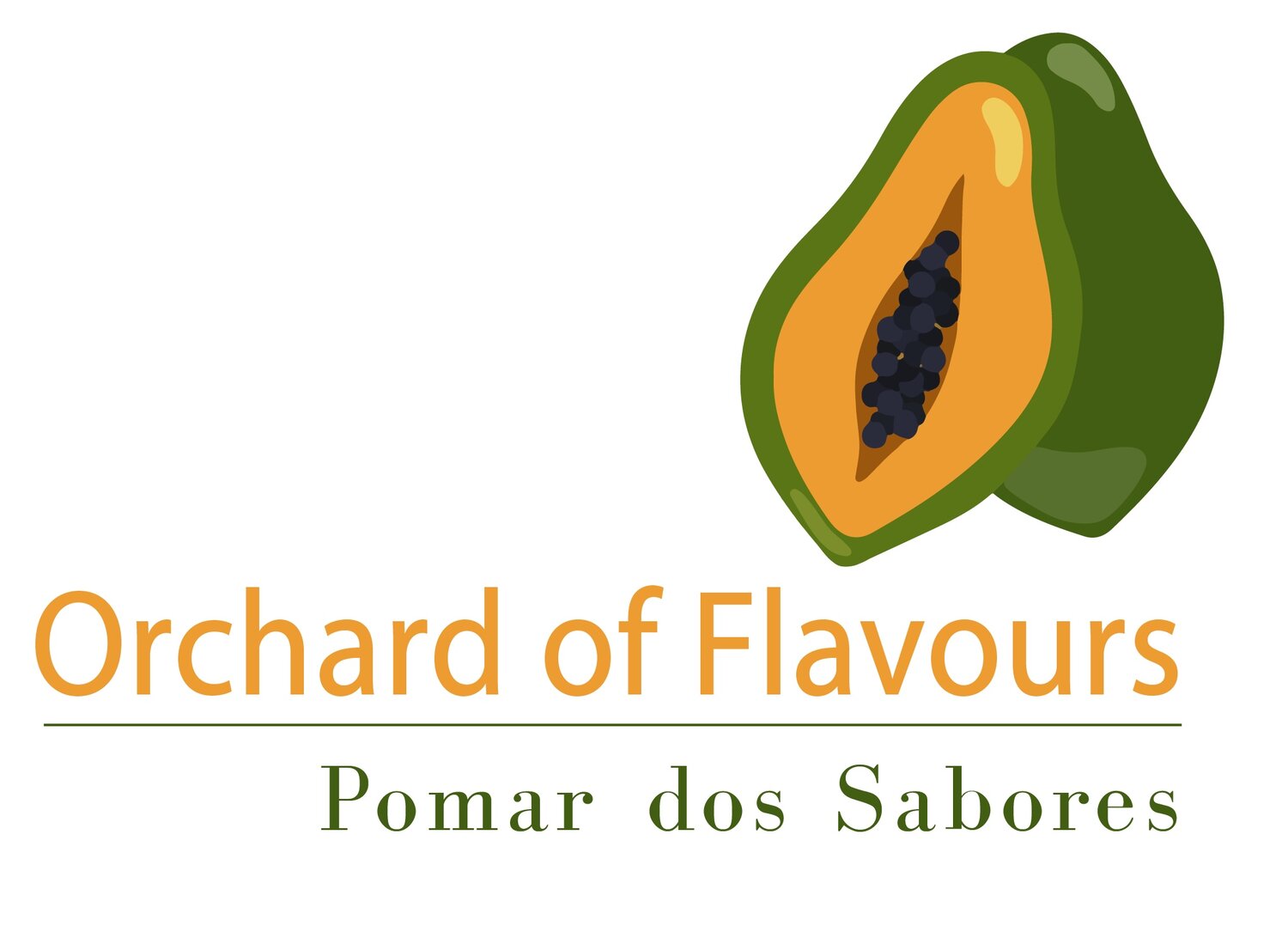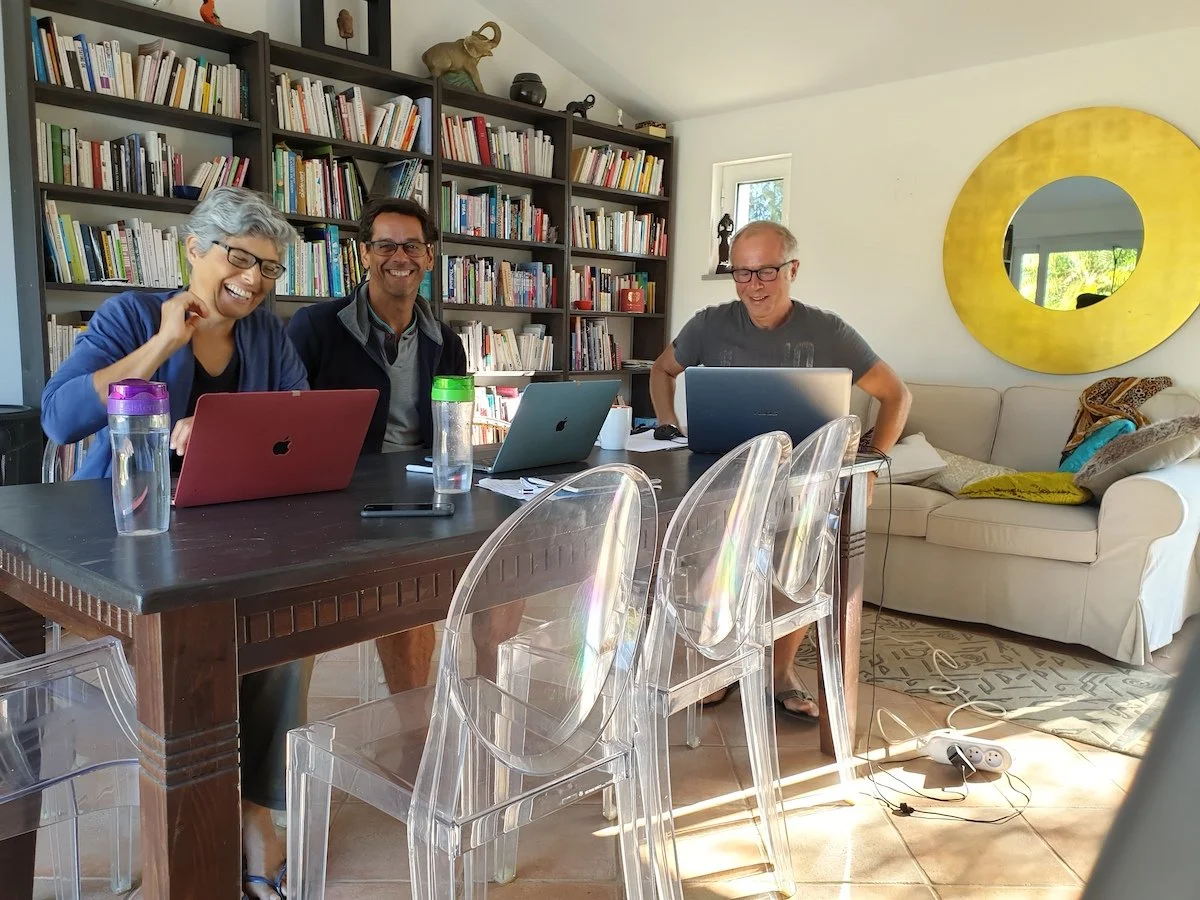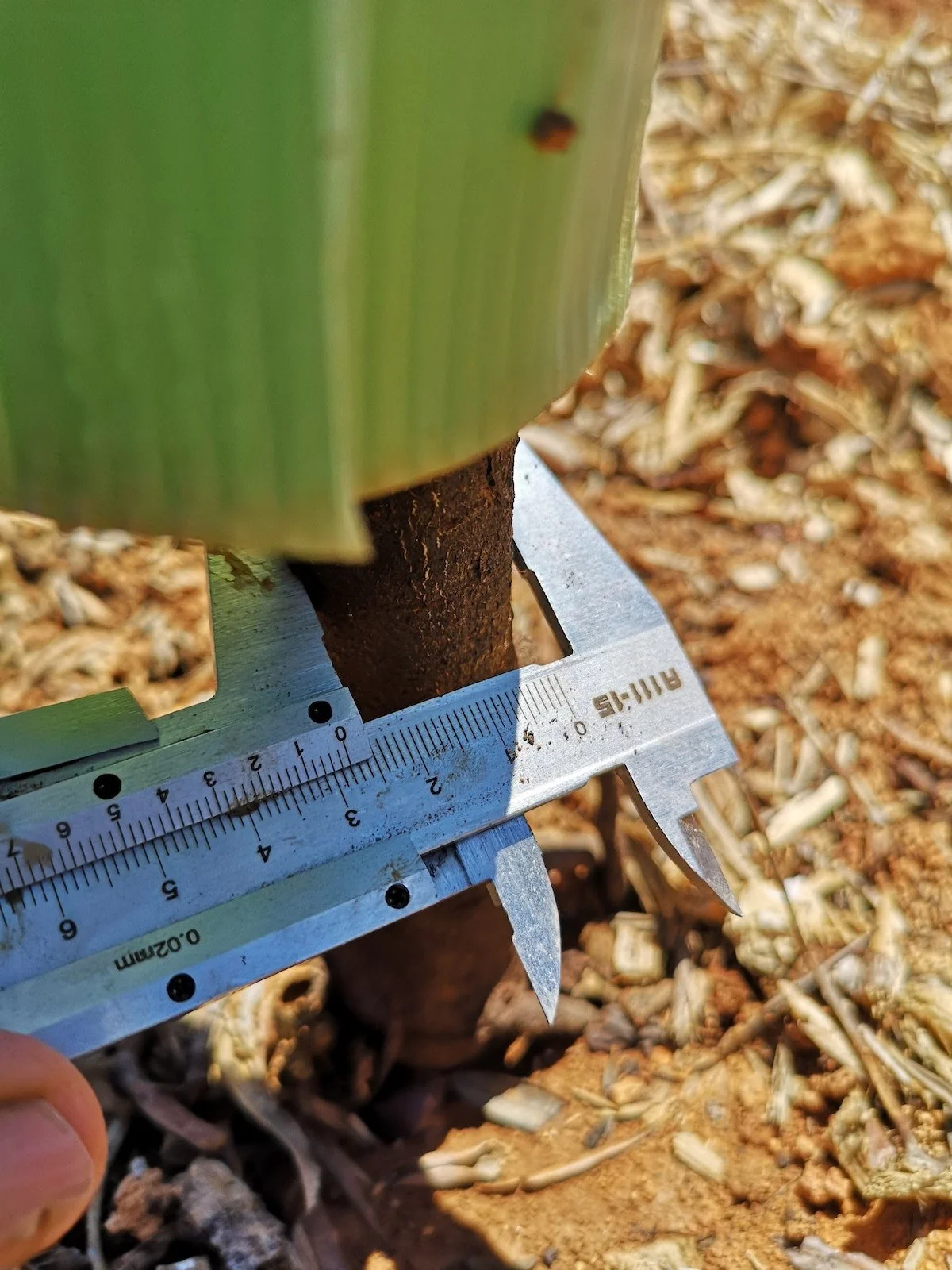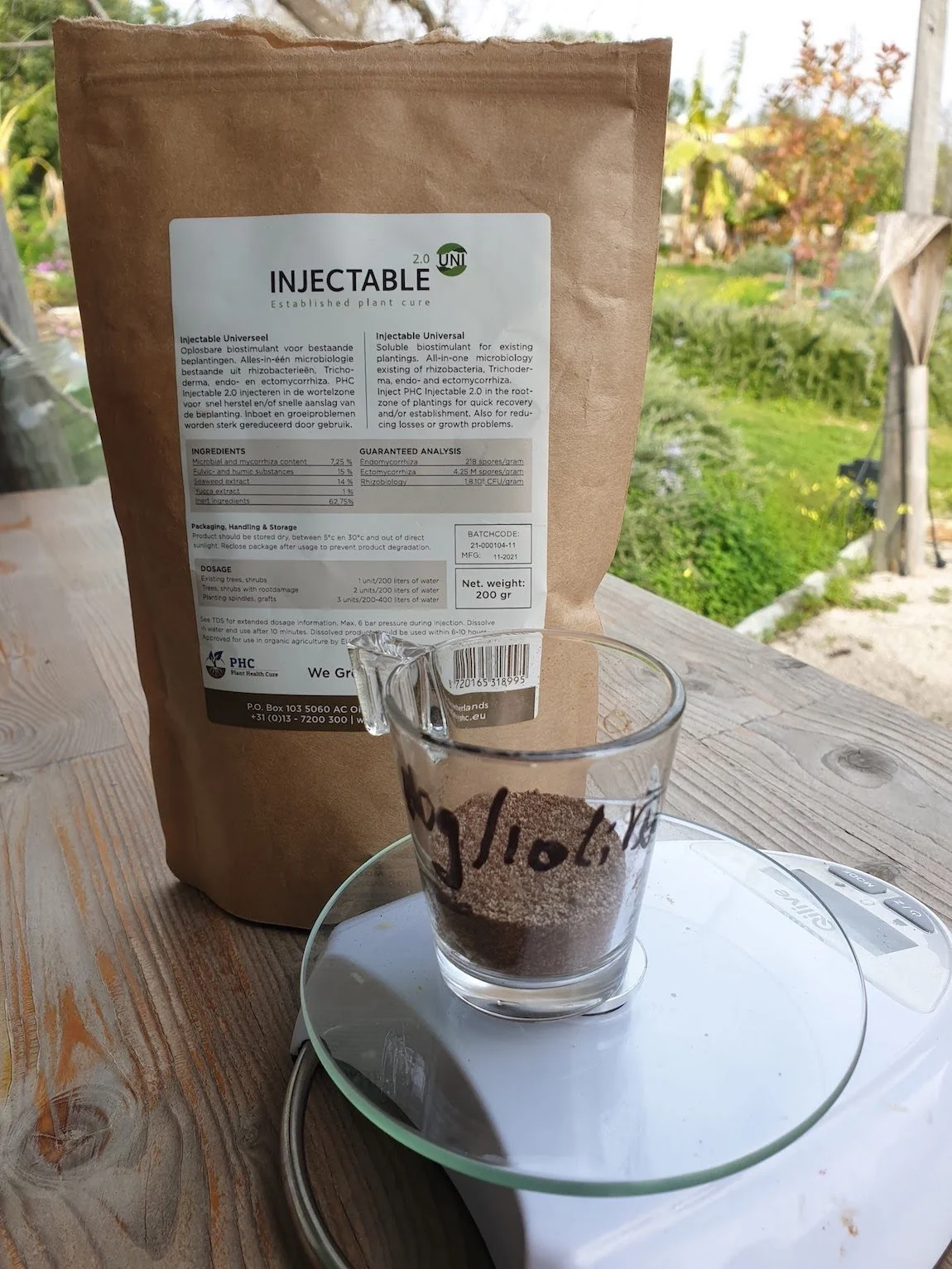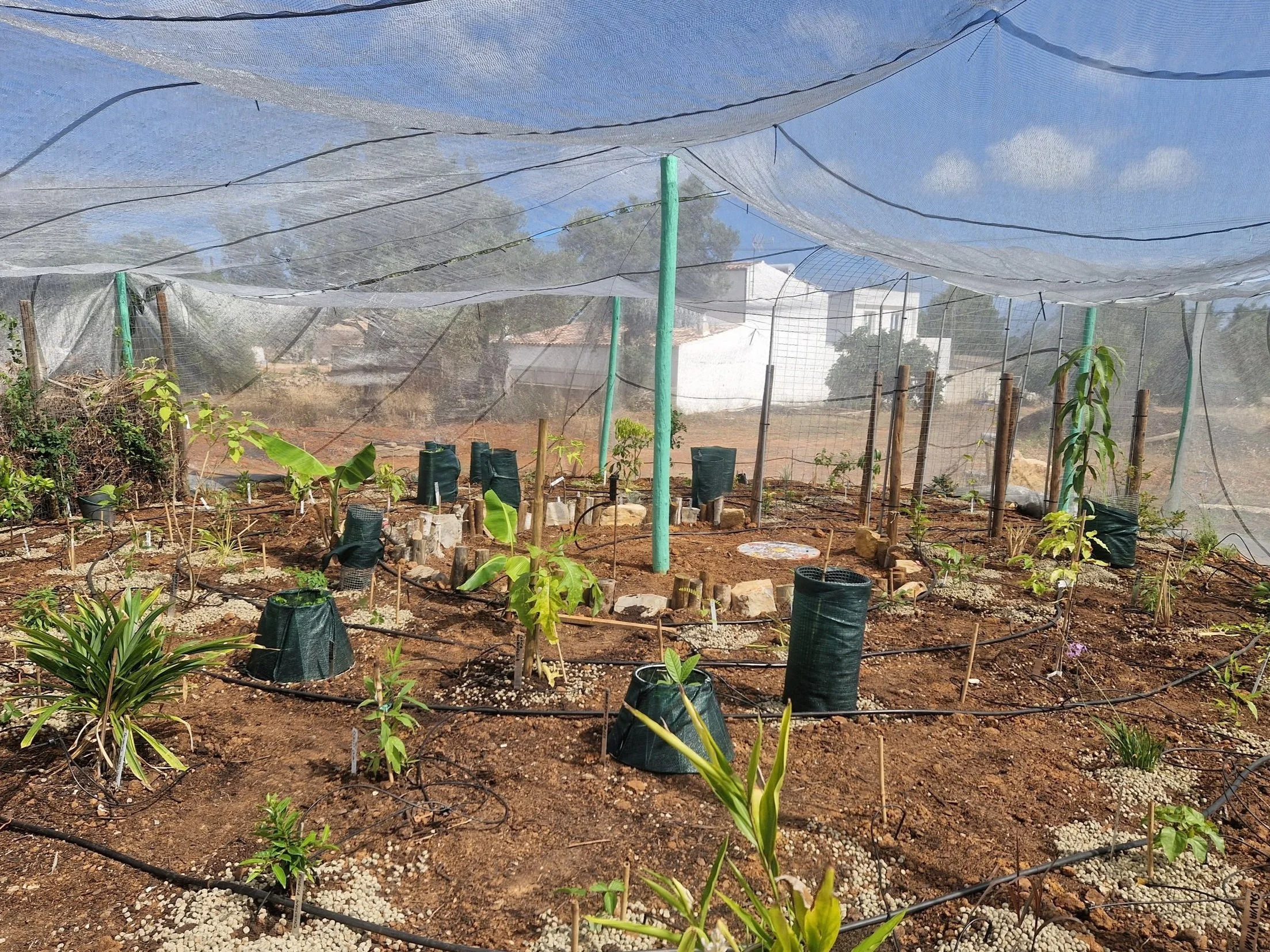Research and Collaborations
Orchard of Flavours Edible Botanical Garden offers many possible frameworks for studies, papers, and student internships. We have already started forming a strong network on the educational and community fronts, and now we want to focus on further expanding our scientific capabilities and connections to the academic sector.
Miguel COTTON and WWOOFers logging in data on the fruit trees database.
Labels, labels and more labels with the botanical names of the many species planted at the Orchard.
We also value collaboration with other botanical gardens which might be focusing on fruit trees / other edible species and climate change in Europe.
We believe it’s important to try to mitigate climate change as much as possible by taking strong immediate actions. At the same time, however, we find it essential to adjust to our new circumstances, since we’re already living the consequences in a very real way.
In that regard, the Orchard of Flavours’s main goal is to find all the fruit trees and other edible plant species that can now be grown in Southern Europe, taking into account the current evolving climatic conditions of diminishing water availability and increasing temperatures.
Eugenia candolleana height and diameter measurements.
Keeping track of tree trunk diameter as the ongoing plant database grows.
The Orchard’s meteobot weather station.
Mycorrhizal fungi cocktail inoculants we’re applying to some of the trees.
In our open source database, we have been collecting data regarding the following fields:
Use of mycorrhizal inoculants (trees with and trees without)
Use of soil moisture retention products (trees with and trees without)
Use of biostimulants (monosilicic acid - foliar spray) (trees with and trees without)
Fruiting and harvesting periods of subtropical trees in Southern Europe
Systematic research about the root system of each tree (which could enable us to draw links between their wind resistance, drought tolerance and invasiveness tendency, as well as to find better ways to irrigate, fertilize and interplant the different species)
Our second Miyawaki-inspired experimental Food Forest, June 2023
Testing different soil samples from the Orchard.
4 well-documented Miyawaki-inspired Food Forests, planted between July 2021 and September 2023. (We record the tree measurements once a year. There is a time-lapse camera capturing both experiments, and we cross reference the growth of individual trees with a few identical trees planted at the same date outside the Miyawaki forests)
Use of a professional agricultural weather station complete with water sensors. The weather station continuously records, among other data, the following (all of this data can be easily downloaded and analyzed):
Local evapotranspiration
Solar irradiation
Soil temperature
Soil moisture at 4 different levels
Air temperature (and temperature sum, growing degree-days, chill hours)
Relative air humidity
Wind strength
Rainfall
Do you see an opportunity for collaboration here? Get in touch with us and let’s talk!
You can also reach Miguel Cotton, the Orchard of Flavours’ founder, by e-mail : (miguel@orchardofflavours.com) or by phone / Whatsapp : +351 915 648 264
Orchard of Flavours, Luz de Tavira, from above, May 2023
